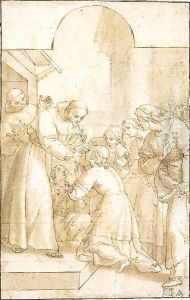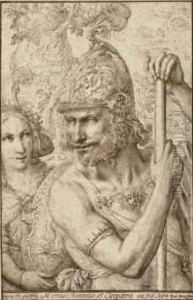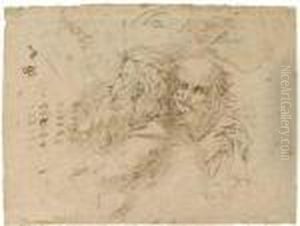Domenico Peruzzini Paintings
Domenico Peruzzini, an Italian painter, was born in 1643 in Ancona, a city with a rich artistic heritage in the Marche region of Italy. His life spanned a period of significant change in the arts, situated within the late Baroque era, which is known for its dramatic use of light and color, and an emphasis on expressiveness and grandeur. Peruzzini's contributions to the art world, although perhaps not as widely recognized as some of his contemporaries, still hold a place of respect for their adherence to and evolution of the Baroque sensibilities.
Peruzzini was trained by his father, who was also a painter, before continuing his education and artistic development under the guidance of notable artists of the time. This early exposure to the arts not only honed his technical skills but also deeply ingrained in him the principles of the Baroque style, which he would later adapt in his own unique way. Throughout his career, Peruzzini specialized in both religious and secular subjects, producing works for churches, private patrons, and public spaces. His paintings are characterized by their vibrant colors, dynamic compositions, and the emotional intensity of the figures depicted.
Despite the lack of extensive documentation on his life, Peruzzini's works have been rediscovered and appreciated in more recent years for their artistic value and contribution to the Baroque movement. His ability to blend traditional themes with a personal interpretation has allowed his paintings to stand out, offering a glimpse into the versatility and creativity of 17th-century Italian art. Peruzzini passed away in 1724, leaving behind a legacy that, while understated, is emblematic of the richness and depth of the Baroque era.


